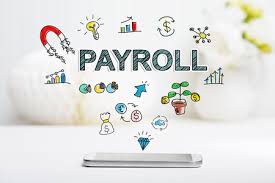Explanation of T Account, Debit and Credit, and Double Entry Accounting System
The Accounting Definition
Debits and credits serve as the two balancing aspects of every financial transaction in double-entry bookkeeping. Debits are entered on the left side of a ledger, and credits are entered on the right side of a ledger. Whether a debit increases or decreases an account depends on what kind of account it is. In the accounting equation Assets = Liabilities + Equity, if an asset account increases (by a debit), then one must also either decrease (credit) another asset account or increase (credit) a liability or equity account.
Another way to help remember debit and credit rules, is to think of the accounting equation as a tee (T), the vertical line of the tee (T) goes between assets and liabilities. Everything on the left side (debit side) increases with a debit and has a normal debit balance; everything on the right side (credit side) increases with a credit and has a normal credit balance. (Note: a normal balance does not always mean the accounts balance will be on that side, it’s simply a way of remembering which side increases it).

Double-Entry Accounting Defined
True to its name, double-entry accounting is a standard accounting method that involves recording each transaction in at least two accounts, resulting in a debit to one or more accounts and a credit to one or more accounts.
The total amount of the transactions in each case must balance out, ensuring that all dollars are accounted for. Debits are typically noted on the left side of the ledger, while credits are typically noted on the right side.
Public companies must follow the accounting rules and methods dictated by generally accepted accounting principles (GAAP), which are controlled by a nongovernmental entity called the Financial Accounting Standards Board (FASB).
Double-entry accounting also serves as the most efficient way for a company to monitor its financial growth, especially as the scale of business grows.
Keeping Accurate Books
As a company’s business grows, the likelihood of clerical errors increases. Although double-entry accounting does not prevent errors entirely, it limits the effect any errors have on the overall accounts.
Because the accounts are set up to check each transaction to be sure it balances out, errors will be flagged to accountants quickly, before the error produces subsequent errors in a domino effect. Additionally, the nature of the account structure makes it easier to trace back through entries to find out where an error originated.
Account Types
When you employ double-entry accounting, you will need to use several types of accounts. Some key account types include:
- Asset accounts show dollars associated with things a business owns, such as the cash in its checking account or the price paid for its warehouse.
- Liability accounts show what the firm owes, such as a building mortgage, equipment loan, or credit card balances.
- Income accounts represent money received, such as sales revenue and interest income.
- Expense accounts show money spent, including purchased goods for sale, payroll costs, rent, and advertising.
The double-entry system requires a chart of accounts, which consists of all of the balance sheet and income statement accounts in which accountants make entries. A given company can add accounts and tailor them to more specifically reflect the company’s operations, accounting, and reporting needs.

Double-entry accounting system and its rules
The double-entry rules can be helpful when we need to find a mistake in financial records. If total debits do not equal total credits, there must be a mistake. However, this system cannot ensure complete accuracy. For example, even if debit balances equal credit ones, an error may still be present because a wrong account was debited (or credited) when the entry was made.
The two important rules about the double-entry recording system are as follows:
- Assets = Claims (Liabilities and Owner’s Equity)
- Total Debits = Total Credits

Debits and credits
In double entry bookkeeping, debits and credits are entries made in account ledgers to record changes in value resulting from business transactions. A debit entry in an account represents a transfer of value to that account, and a credit entry represents a transfer from the account. Each transaction transfers value from credited accounts to debited accounts. For example, a tenant who writes a rent cheque to a landlord would enter a credit for the bank account on which the cheque is drawn, and a debit in a rent expense account. Similarly, the landlord would enter a credit in the receivable account associated with the tenant and a debit for the bank account where the cheque is deposited.
Debits and credits are traditionally distinguished by writing the transfer amounts in separate columns of an account book. Alternately, they can be listed in one column, indicating debits with the suffix “Dr” or writing them plain, and indicating credits with the suffix “Cr” or a minus sign. Despite the use of a minus sign, debits and credits do not correspond directly to positive and negative numbers. When the total of debits in an account exceeds the total of credits, the account is said to have a net debit balance equal to the difference; when the opposite is true, it has a net credit balance. For a particular account, one of these will be the normal balance type and will be reported as a positive number, while a negative balance will indicate an abnormal situation, as when a bank account is overdrawn. Debit balances are normal for asset and expense accounts, and credit balances are normal for liability, equity and revenue accounts.
T-Account
Accounting records about events and transactions are recorded in accounts. An account is an individual record of increases and decreases in a specific asset, liability, or owner’s equity item. Look at accounts as a place for recording numbers related to a certain item or class of transactions. Examples of accounts may be Cash, Accounts Receivable, Fixed Assets, Accounts Payable, Accrued Payroll, Sales, Rent Expenses and so on.
An account consists of three parts:
- Title of the account
- Left side (known as debit )
- Right side (known as credit )
Because the alignment of these parts of an account resembles the letter T, it is referred to as a T account . You could draw T accounts on a piece of paper and use it to maintain your accounting records.



